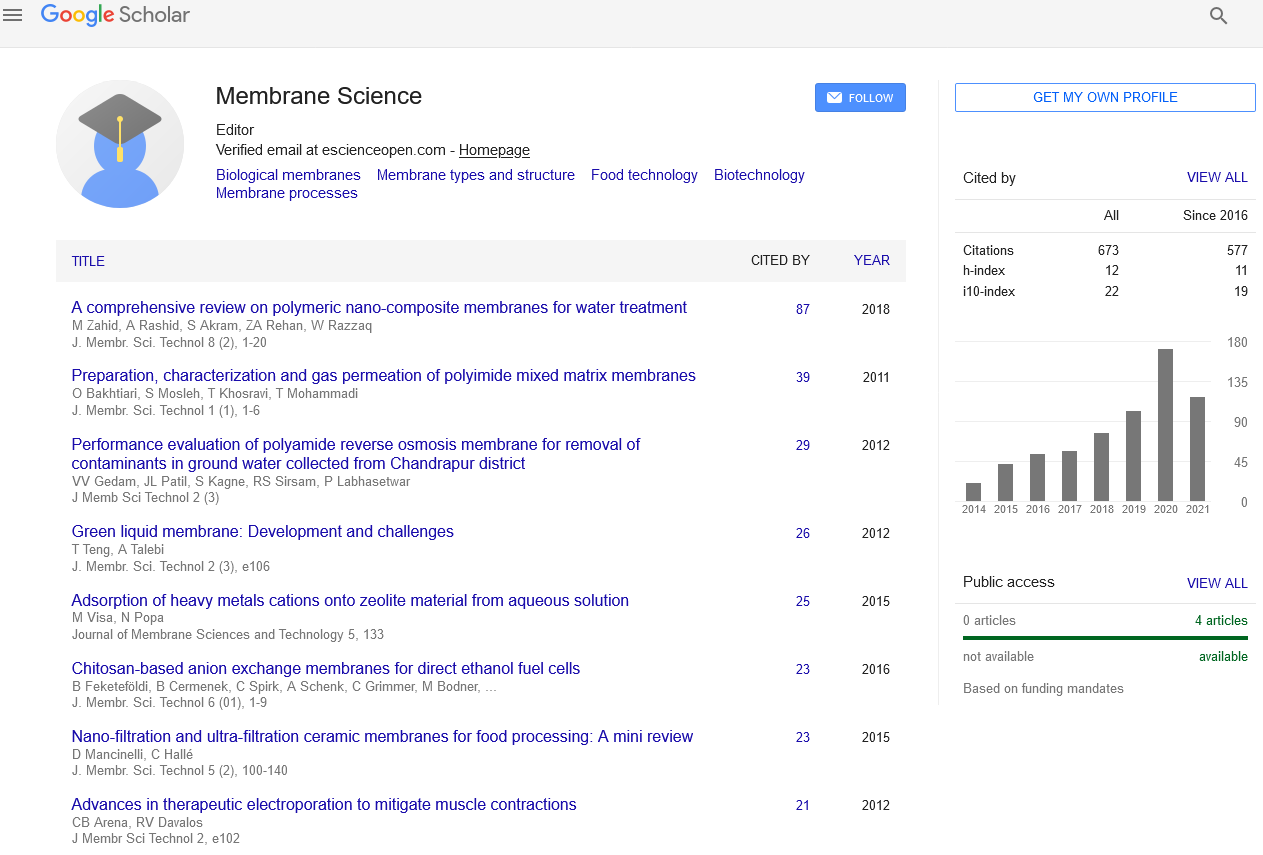Indexed In
- Open J Gate
- Genamics JournalSeek
- Ulrich's Periodicals Directory
- RefSeek
- Directory of Research Journal Indexing (DRJI)
- Hamdard University
- EBSCO A-Z
- OCLC- WorldCat
- Proquest Summons
- Scholarsteer
- Publons
- Geneva Foundation for Medical Education and Research
- Euro Pub
- Google Scholar
Useful Links
Share This Page
Journal Flyer

Open Access Journals
- Agri and Aquaculture
- Biochemistry
- Bioinformatics & Systems Biology
- Business & Management
- Chemistry
- Clinical Sciences
- Engineering
- Food & Nutrition
- General Science
- Genetics & Molecular Biology
- Immunology & Microbiology
- Medical Sciences
- Neuroscience & Psychology
- Nursing & Health Care
- Pharmaceutical Sciences
Abstract
Integrated Ultrafiltration Membranes and Chemical Coagulation for Treatment of Baker’s Yeast Wastewater
Nouri Alavijeh H, Sadeghi M, Rajaeieh M, Moheb A, Sadani M and Ismail AF
An integrated system ultrafiltration membrane-coagulation has been employed for removal of chemical oxygen demand (COD) and turbidity from baker's yeast effluents. Fouling in the membrane is a common problem; chemical coagulation has been used as a pre-treatment method to mitigate fouling. Poly aluminum chloride (PACl), aluminum sulfate and lime had been used as coagulants. The results indicated that PACl exhibited higher removal efficiency than other coagulants. Two-stage coagulation and combination of coagulants were also investigated. The removal efficiency of COD and turbidity were achieved 68% and 81% by two-stage coagulation by PACl-lime, respectively. The effects of operating conditions on the ultrafiltration process for two types of hollow fiber membranes polyvinylidene fluoride (PVDF) and polypropylene (PP) on permeate flow rate, turbidity and COD removal of wastewater were further investigated. The results showed that by increasing the feed pressure, flow rate and feed temperature the permeate flow rate increased and the removal efficiency decreased. Under optimum conditions, PVDF membrane showed higher performance but compromised the flux compared to PP membrane.


